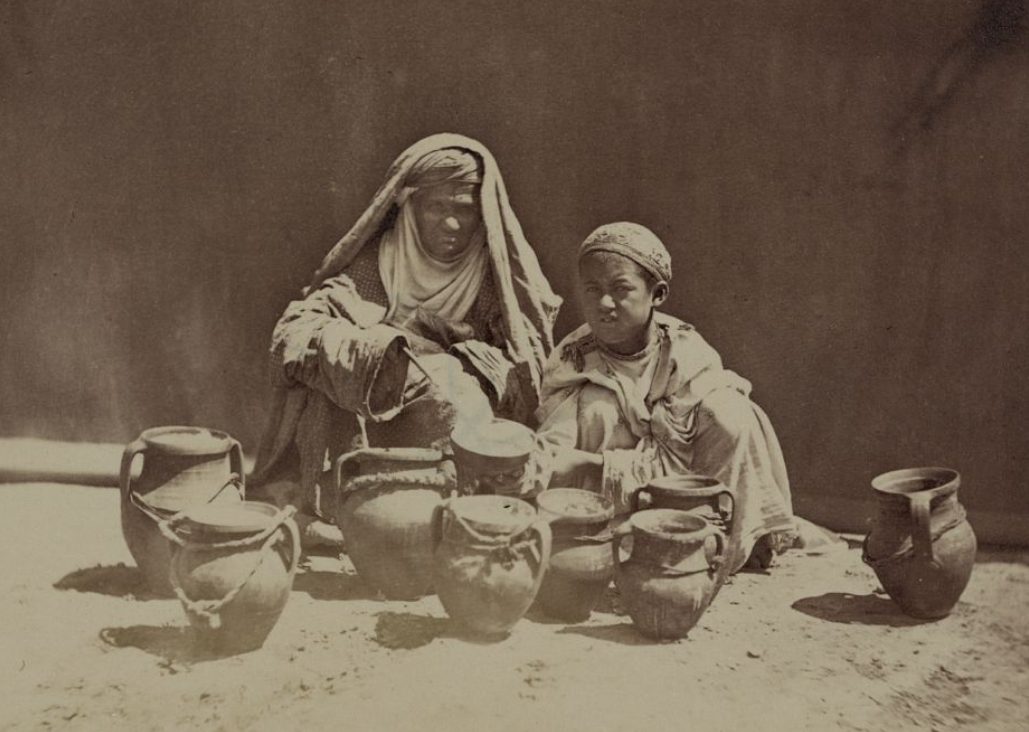Yogurt is an incredibly versatile food, and many (including my daughters!) have made it a tasty staple of their diet. But, did you know that yogurt has actually been around for thousands of years and has a complex, rich history?
Grab a spoon, and let's dig in—it's time to learn everything you didn't know you needed to know about the history of yogurt.
Before we explore the invention of everyone's favorite dairy product, we need to understand what exactly yogurt is.
In its simplest form, yogurt is a dairy product made by heating milk to a high temperature and adding in healthy bacteria to metabolize the milk's sugars. Yogurt is similar to sour cream, buttermilk, and acidophilus milk, but each product has a slightly different production method.

Yogurt is easy to make at home with just two ingredients:
That's really it! Yogurt has a simple structure in essence, but many people like to include other ingredients such as:
Though basic yogurt contains just two ingredients, the process of turning those ingredients into the thick mixture that we know as yogurt takes a few steps.
Though this process may sound complex at first, the bacteria do the hard work. Having the patience to let the yogurt ferment is the hardest step... but once your yogurt is complete, you'll feel like a master chef for completely transforming two simple ingredients into a tasty treat.
One reason yogurt is so popular is because of the health benefits that it has to offer. Yogurt is an excellent source of calcium and protein, just like many dairy products, and it also provides vitamins and minerals such as:
The healthy bacteria in yogurt can also help you digest foods easier and aid your overall gut health, a key driver behind why many folks eat it daily.
Though people often eat plain yogurt as a snack, it is also the main component in many dishes, both large and small. Tzatziki, a Greek dipping sauce, utilizes a yogurt base, commonly mixed with cucumbers, garlic, and salt. Similarly, the Indian dish Tandoori makes the most of yogurt's creaminess to balance out the masala's spiciness.
These appearances around the world show that yogurt is certainly not limited to American or European fridges. In fact, it made its first appearance centuries before America was even a country. Let's take a look at how yogurt first came to be.

Like so many great things in life, yogurt began as a happy accident. Though its exact origin is unknown, many civilizations stake a claim for the discovery of yogurt.
Historians believe that yogurt first originated during the Neolithic Period, anywhere from 5,000 to 10,000 years ago. Neolithic people had already figured out how to make bread and beer through accidental fermentation, and they likely similarly discovered yogurt.
During this period, people began domesticating animals – starting with the sheep – and figuring out ways to use livestock for food. Milk from goats, cows, and sheep was a common source of nutrition, and with no access to refrigeration, it's easy to imagine milk would often sour in the Middle East's humid temperatures. This sour milk became an early proxy for yogurt.
Over time, Neolithic people figured out that adding bacteria from plants to milk gave it specific health benefits and created a unique flavor and texture, likely improving early processes.
A few thousand years later, between 6000 and 4000 BC, people in India also began fermenting milk to create dairy dishes. Dahi, or sour milk, rapidly became a popular food item, and the word of health benefits (and claims) owing to fermented dairy products spread throughout the region.
Yogurt was also a formative component in Indian culture and tradition. Cows have always been valued highly in India. The Vedas – ancient Hindu scriptures – personify the earth as a Cosmic Cow—and ancient Indians considered yogurt "the food of the gods"!
Some historians maintain that it was actually Mesopotamians who first (likely accidentally) discovered yogurt. Around 5000 BCE, people in Mesopotamia and Iran carried milk around in pouches made from animals' stomachs.
What they didn't know was these stomachs contained an enzyme that would gel when mixed with milk, and were a suitable surface for bacteria.
That gel is what would later be known as yogurt.
Anytime they transported milk in their pouches, Mesopotamians were accidentally making yogurt!
Did you read about yogurt in the Bible? I can't say that I did, but according to historians, there is also evidence of yogurt's popularity in the Christian Holy Book.
Many historians believe that Abraham owed his health and youthfulness to yogurt, as is referenced in the book of Job. Some believe that "the land of milk and honey" is also a reference to the food, as ancient people often added honey to their yogurt to balance out the acidity.
Have you ever tried Greek yogurt? It's thicker than traditional yogurt varieties and has become more and more popular in recent years. Even earlier, the ancient Greeks had a dairy product Oxygala, a thick form of yogurt that they ate with honey.
In Egypt, yogurt originated as a practical way to store dairy for longer periods. Without suitable refrigeration, milk spoiled quickly, but Egyptians soon learned that fermented milk was still consumable, had a tasty acidic flavor, and provided similar health benefits to fresh milk.
Ancient Romans also discovered how to make yogurt through fermenting milk. Pliny the Elder wrote about this discovery in the oldest writings about yogurt known to man. He noted that the Romans enjoyed the "agreeable acidity" of the fermented milk.
Other cultures likely discovered yogurt in similar ways to the countries noted above. For example, Ancient Bulgarians also stored milk in bags made from animal stomachs, which created a ripe environment for bacteria to grow and transform the milk into yogurt.
The exact origin of yogurt is unknown, but the fact that so many stories revolve around accidental discovery suggests that the first appearance could have been thousands of years before the first written mention.
Of course – after its initial invention, people began using yogurt in even more complex ways.

Besides being a tasty way to consume "old milk" safely, ancient civilizations discovered other yogurt uses that elevated its status above other foods. Yogurt soon became known for its health benefits, medicinal uses, and more.
"Yogurt" might be commonplace in the English language today, but it actually originated from another tongue altogether. The word yogurt likely comes from the Turkish word Yoğurmak, which means to thicken or curdle.
Turks were also the first recorded people to use yogurt to treat a variety of illnesses and medical conditions. Though other cultures had noted the digestive benefits of yogurt, Turkish doctors began to prescribe the food to treat diarrhea and stomach cramps. Like many medicines (ahem, even some today...), they did not know why yogurt helped with gut problems, just that it did.
The ancient Turks also found that yogurt's creaminess could help treat sunburn in a similar way to how lotion helps hydrate dry skin today. Turks would rub yogurt on their skin to soothe the discomfort from the burn.
Yogurt continued to grow in popularity, eventually landing in the hands of the Mongol Empire's fearless founder, the infamous Genghis Khan.
Genghis Khan reportedly fed his nomadic army yogurt as opposed to the traditional grain-based diets of their enemies. He believed that yogurt instilled bravery in his men and helped them perform better in battle. Though medical professionals have not yet proven this claim, perhaps the yogurt calmed the warriors' stomachs and – in turn – helped them focus on the battle at hand. (If you buy that, it's one to remember if you're looking for a snack before a nerve-wracking day at work!)
The emperor also may have inadvertently introduced yogurt to Europe. Historians believe that Genghis Khan brought yogurt to China during his invasion and that the Tartars then carried the food in their saddlebags as far as eastern Europe.
Rather behind the times, it took the rest of the continent of Europe several thousand years to begin incorporating yogurt into their cuisine.
In 1542, King Francois I of France had a horrible bout of diarrhea that no French treatment could help. His court sent out requests to their allies to ask if anyone knew of a cure for this illness. Suleiman the Magnificent, the Ottoman Empire's Sultan, sent one of his doctors to assist the king, and the doctor suggested yogurt – the king was cured!
After Francois I's success with yogurt, the food's popularity began to spread throughout Europe and it even became a delectable dessert. (After all, you would be eating the same food as a king!)
The Europeans popularized mixing yogurt with fruit, honey, and cinnamon to create a sweet treat that still provided its incredible health benefits. Yogurt was now tastier to eat and had a medical value apart from its ability to stay consumable in humid, warm temperatures. But yogurt's popularity has continued to grow since the 16th century, and new research has identified still more benefits of this versatile dish.
Nothing stays the same forever. And in the case of yogurt, things kept getting better and better.
Once people understood the advantages of fermenting milk and saw some of the health benefits of eating yogurt, they began to transform the food's basic composition. Their new aim was to make it even tastier, healthier, and longer-lasting.
One major path of transformation for yogurt was the discovery of what made the food so darn healthy. In a word: bacteria.
In 1675, Antonie van Leeuwenhoek observed bacteria in his Dutch laboratory. Twenty-five years later, Andry noticed these same living organisms in sour milk. He linked their presence to the unique health benefits of the food.
However, it took a few hundred years to understand how bacteria worked in foods. (At this time, germs were still unknown aspects of health and medicine).
By the 1800s, scientists had begun to comprehend the chemical processes involved in yogurt production—specifically, the creation of lactic acid from sugar fermentation—which led to even more exciting discoveries.
Understanding exactly why milk ferments helped scientists to gain a better grasp of why fermentation produces health benefits. Over time, researchers began to learn that there are healthy bacteria and unhealthy bacteria and that the strain found in yogurt and dairy products can promote digestive health.
When you think of modern yogurt, you likely think of Dannon and their catchy theme song.
That's because the Danone Company, the parent company for the Danone yogurt brand, has been commercializing yogurt since its foundation in 1919.
Isaac Carasso, Danone's founder, grew up in Barcelona, Spain. After learning about the scientific process from the Pasteur Institute in Paris, he started making yogurt commercially. He eventually brought his recipe (and the company – branded Dannon in the US) to America in 1942.
At the time, yogurt was relatively unpopular in America, and many disliked its acidic flavor and thin consistency. However, Danone began incorporating unique flavors and sweeteners to make it more appealing. Over time, it slowly became an American favorite – just as it had in other countries.
Danone continued to be the big name in the yogurt industry when it came to improving yogurt's flavor and consistency. Juan E. Metzger, the president of the company in 1959, was the first to suggest putting fruit in the bottom of yogurt cups. He also worked to improve the appeal of the food to the American public, at one time promoting the food as an effective meat substitute.
As time went on, yogurt began branching off into the dessert world, with many varieties incorporating chocolate and caramel, among other sweet flavors hitting grocery store shelves. Danone also created whipped, granola-topped, drinkable, and frozen yogurt, creating even more options to suit a wider market.

Today, yogurt is one of the highest-grossing foods in the market. In 2015, it accounted for $7.7 billion in food sales in the U.S. alone.
Frozen yogurt has also expanded in the dessert industry—37.05 million Americans consumed frozen yogurt in 2018.
It appears that yogurt keeps getting more and more popular as the years go on. I don't mind myself—and with the way my family eats it up, I don't see yogurt ever leaving the shelves of grocery stores in America. The more other people like it, the more choice there is for me!